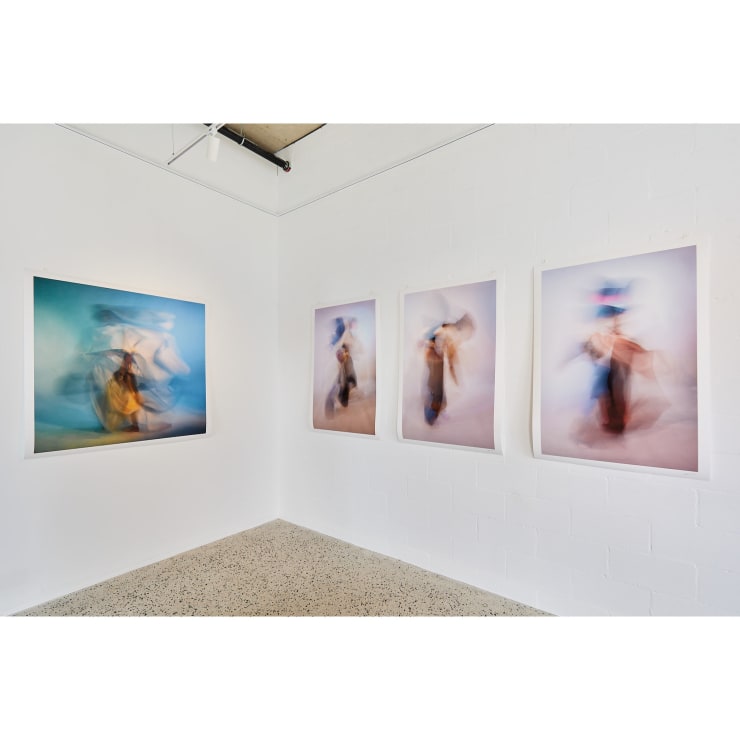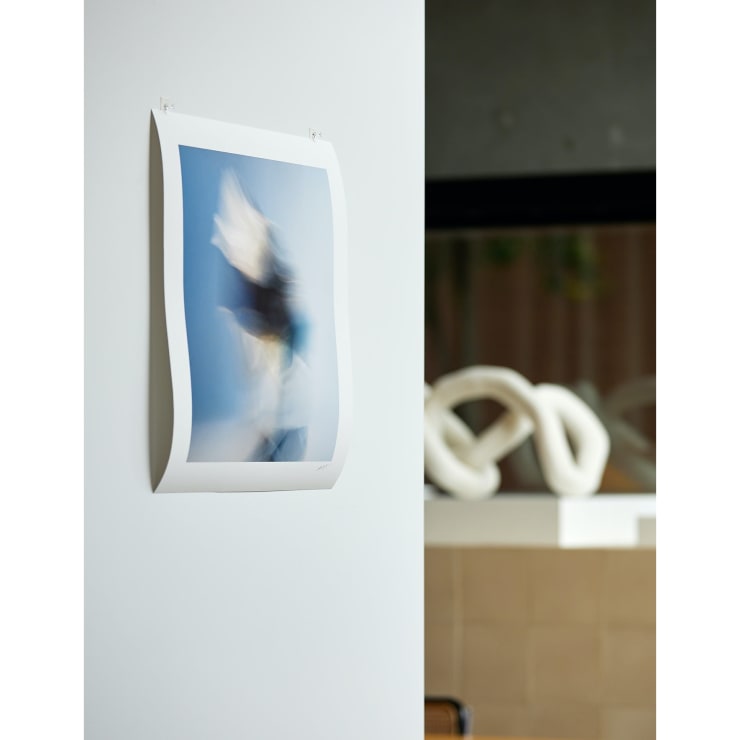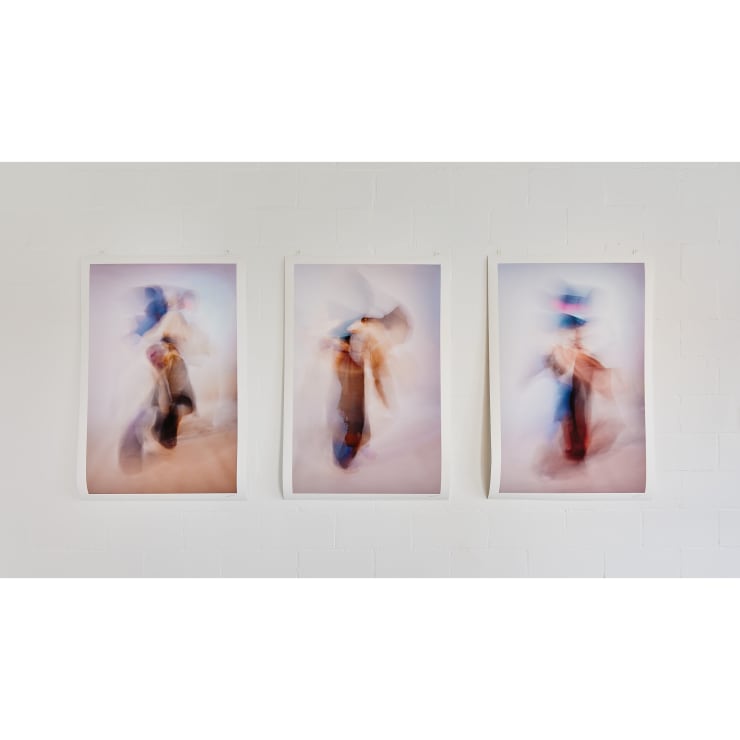OTOMYS: Dans Van Kleur presents an exploration of new colours and compositions that we have not yet seen in your work to date. What has inspired this change and what is the conceptual significance of this?
Simone Boon: Whilst creating this body of work I was more aware of how I dressed my models. Usually, this process is highly intuitive, however, within many of these works I invested an element of planning. Exploring different methods of wrapping gave way to new visual effects. I enjoyed exploring the inherent properties of each material, from the softness of silk to the crisp transparency of rice paper. The process of dressing my models, however, is still highly intuitive and organic; different materials engage with the body in ways that I cannot predict. The intricacies of this process are complex. I was inspired by the art of Japanese Kimono dressing. I was captivated by the level of thought and care that the highly skilled dresser puts into each layer. There are so many hidden layers that work to inform the final result. Every layer has a purpose. The idea that there are many layers that build to create an exterior is extremely poetic - it speaks to how people accumulate layers to form their own identity.
OTOMYS: This connection between layers and identity is extremely interesting. Can you tell us about the role of identity within your work?
Simone Boon: As I create my images I experience feelings of wanting to hide the figure within the layers of material. I search for the right way to cover them, debating whether I reveal a hand or a finger. I think my desire to conceal the body is an attempt to protect the identity of this wraith-like figure. Removing the vulnerability that a face offers also allows the viewer to apply their own interception of the image, responding to the mystery of the blurry shapes and forms within my photographs. Here, the viewer can bring their own story to the work.
I believe the world has been so focused on the concept of identity in recent years. My practice takes a more holistic approach to identity, acknowledging that identity is a highly complex network of layers, as opposed to focusing on a singular experience.
OTOMYS: There is clearly a strong emotional depth embedded into your practice. As you stage your models for each work do you have a particular mood or emotion in mind?
Simone Boon: As I mentioned, I have to thoughtfully consider the materials and colours that I am about to use. But what underpins all of these decisions is the emotional aspect of hiding and covering the human being, and how different materials shape the mood of this experience. These layers represent the diversity of life. As we travel through life, these layers shift and grow. I saw this with my own daughter, as she transitioned from a young adolescent to a woman. After she finished her studies in Medicine, there was a shift behind her eyes. Her experiences had changed her. She had entered maturity, and with that, new layers were formed. Within my work, we may see a suggestion of a foot or hand, but never a face. This veil of secrecy is what allows the viewer to create their own narrative.
Within my photographic practice, I am interested in the perpetual flux of life, where time, space and place merge and are lifted above a linear concept of time. It is typically favourable to photograph people when they are young, capturing the flush and energy of their youth, without any marks of time and age. In my work, I want to express something different from the present moment. My photographs do not refer to a memento mori but rather take past, present and future along in one image. Also in my photos I want to communicate a sense of freedom; a break from preconceptions and expectations, because in the end, these cultural ideals and preconceptions are temporary and may fade with time.
OTOMYS: What artists have inspired your practice?
Simone Boon: An artist who inspired me a lot and still does is Christo. In his work, there is something spiritual and a birds-eye view as in his work ‘Over the River,’ in which he creates a translucent layer between heaven and the river, floating and following its stream. Which creates a hovering extra dimension it seems. I love his drawings, but last not but least, the wrappings of huge buildings. I realise this influence is found when I am wrapping my models, covering them in layers before a shoot.
I am also inspired by the art of James Turrell and Mark Rothko amongst many others. Both artists use such minimal and reductive elements to evoke the most visceral responses, playing with human perception. In my work, there is also an element of illusion. Upon first inspection, the viewer observes abstract forms, however, the longer they stare, the more they discover. There is a kind of transcendence in Rothko’s colour paintings, they seem to vibrate and float and seem to refer to what is beyond materiality. Similarly, Turrell’s installations also warp our perception of reality. To me, experiencing his work feels like being lifted above gravity, towards the sky and ultimately infinity.





